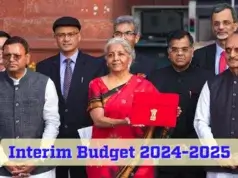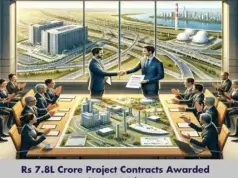 The real estate sector in India is ready to take a big leap in the coming years. The sector is already on a strong growth trajectory and with increasing urbanisation the momentum is expected to continue, writes Neeraj Gulati, Managing Director, Assotech Realty Pvt. Ltd.
The real estate sector in India is ready to take a big leap in the coming years. The sector is already on a strong growth trajectory and with increasing urbanisation the momentum is expected to continue, writes Neeraj Gulati, Managing Director, Assotech Realty Pvt. Ltd.
The growth of the Indian economy has retrograded for the past few years, with concern over the rise in inflation and the wheel of growth slowing down gradually. The trend will prevail while the magnitude of revision indicates improvement in the second half of 2013. Notwithstanding the global economic crisis, the real estate sector has grown substantially over other verticals in India. The real estate sector contributes nearly 5 per cent of India’s GDP and has been a key driver for employment generation in times of crisis. The aspect of affordable housing is a growing concern.
GDP growth progressions for the country have been fairly narrow and revised lower continually over the last few months, with the economy expected to grow at a tepid rate of just 5.3-5.5 per cent in 2013, which carries the hopes and aspirations for the housing sector of the country. As a sector which is on a continual growth process, key expectations from this year’s budget have been reflected, first and foremost, in the grant of infrastructure status to the sector, instituting a regulatory body and a transparent policy pertaining to the issue of land acquisition for developing real estate.
Rapid urbanisation on an unprecedented scale, change in lifestyle form (from joint family to nucleus) clubbed with globalisation is leading to a colossal demand for housing units in the urban setup. The gap between supply and demand is ever increasing, indicating urgency, particularly for the EWS and LIG sections of the populace, as the quantum of shortfall accounts for two-third of the demand.
It is estimated that the quantum of housing construction to the national income to be at 6.9 per cent CAGR. The habitat policy of the Indian government, to eliminate housing shortage by 2012, will be further pushed to 2013. Maximum growth in housing construction will happen around the metropolis due to the availability of land and affordable pricing compared to Tier 1 cities.
 Huge impact will be seen in the retail real estate segment as a reflection of opening of the gates for FDI in multi-brands. This will lead to foreign companies seeking business opportunities. Metros like Mumbai, Delhi NCR, Chennai, Bengaluru, Pune and Hyderabad will grow at a sound pace further to exhibiting a robust growth rate (around 70-75 per cent) in 2013.
Huge impact will be seen in the retail real estate segment as a reflection of opening of the gates for FDI in multi-brands. This will lead to foreign companies seeking business opportunities. Metros like Mumbai, Delhi NCR, Chennai, Bengaluru, Pune and Hyderabad will grow at a sound pace further to exhibiting a robust growth rate (around 70-75 per cent) in 2013.
In commercial real estate investment potential, Mumbai, Bengaluru and Delhi NCR will continue to garner more attention from investors in the coming year. Mumbai will see highest transaction record in commercial space while Delhi NCR will witness NRI and institutional investment, which would bolster the office space real estate that would drive the sector to new heights. This will further propel the real estate sector as a whole.
Some positive factors include relaxation in monetary policy by the central bank, widening of ECB channel and marginal increase in loans for funding of upcoming projects. GAAR implications might be taken off temporarily as the country is going through a development phase where availability of funds to run existing projects is essential. Fund raising through private equity would increase at a notable pace. Simultaneous emphasis would be given to infrastructure, transportation and real estate to develop integrated townships and accommodate high rises.
The real estate sector in India is ready to take a big leap in the coming years. Since 2008-09, the sector has been on a strong growth trajectory and with increasing urbanisation the momentum is expected to continue. Strong demographic mix and increasing salary levels will be the key triggers for growth of the residential market in 2013. Operating in a dynamic environment, the success of real estate companies hinges, in large part, on their ability to deliver innovative, user-accepted products and services in a timely, seamless manner. With advent of new technology, more and more developers are turning to accept these as a tool for optimising the value of their businesses in the marketplace. In furtherance to it, ‘green’ initiative undertaken by a majority of the developers would increase in near future.
The Delhi NCR would be a boom in terms of real estate and infrastructure simultaneously as efficient policy implementation in ‘land acquisition’ and ‘FDI in multiband’ will give a decent boost to the sector. The demand for housing and office space would witness exponential growth.












A measure of economic growth from one period to another expressed as a percentage and adjusted for inflation (i.e. expressed in real as opposed to nominal terms). The real economic growth rate is a measure of the rate of change that a nation’s gross domestic product (GDP) experiences from one year to another. Gross national product (GNP) can also be used if a nation’s economy is heavily dependent on foreign earnings.
https://shagunshelters.in/services.php